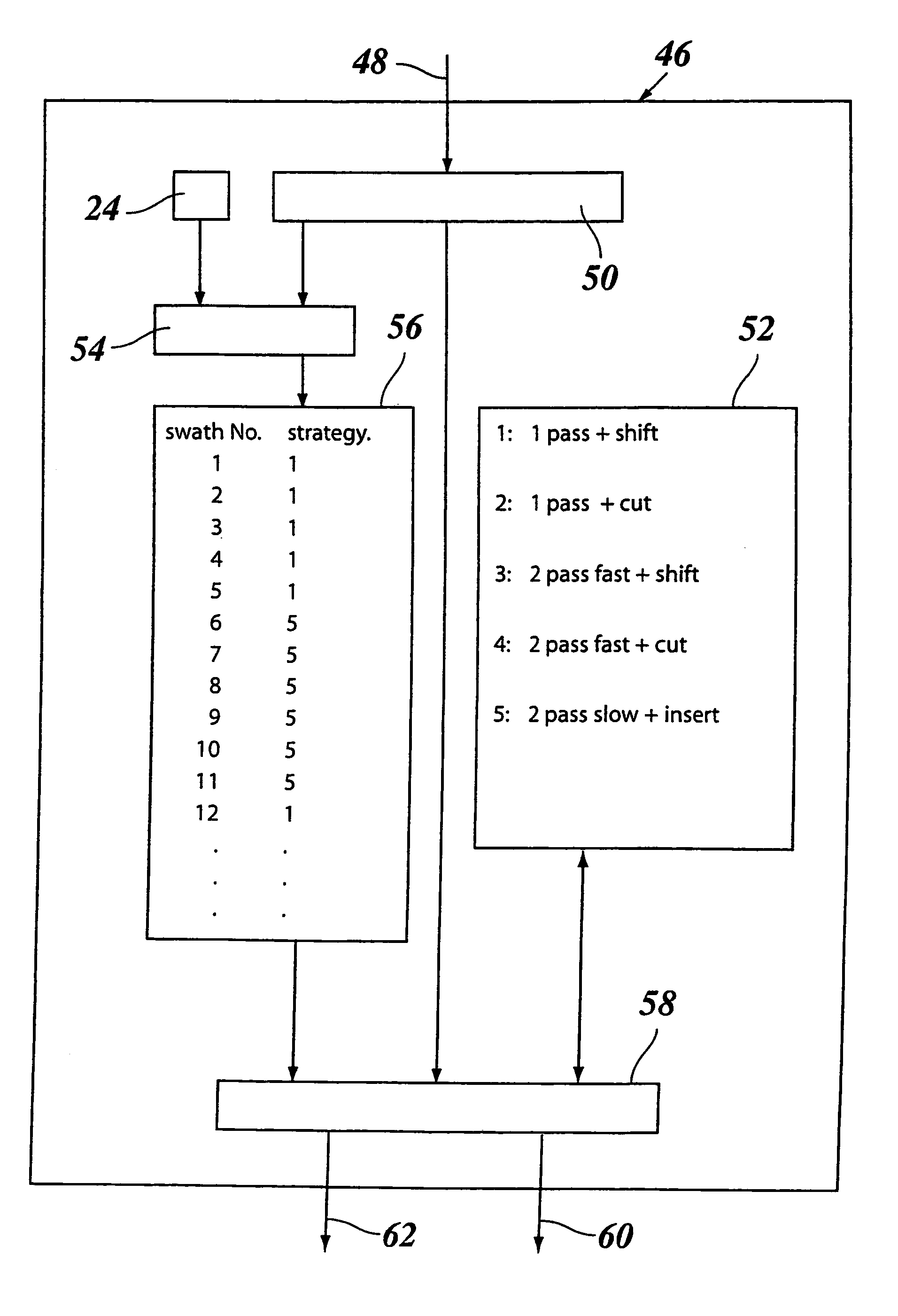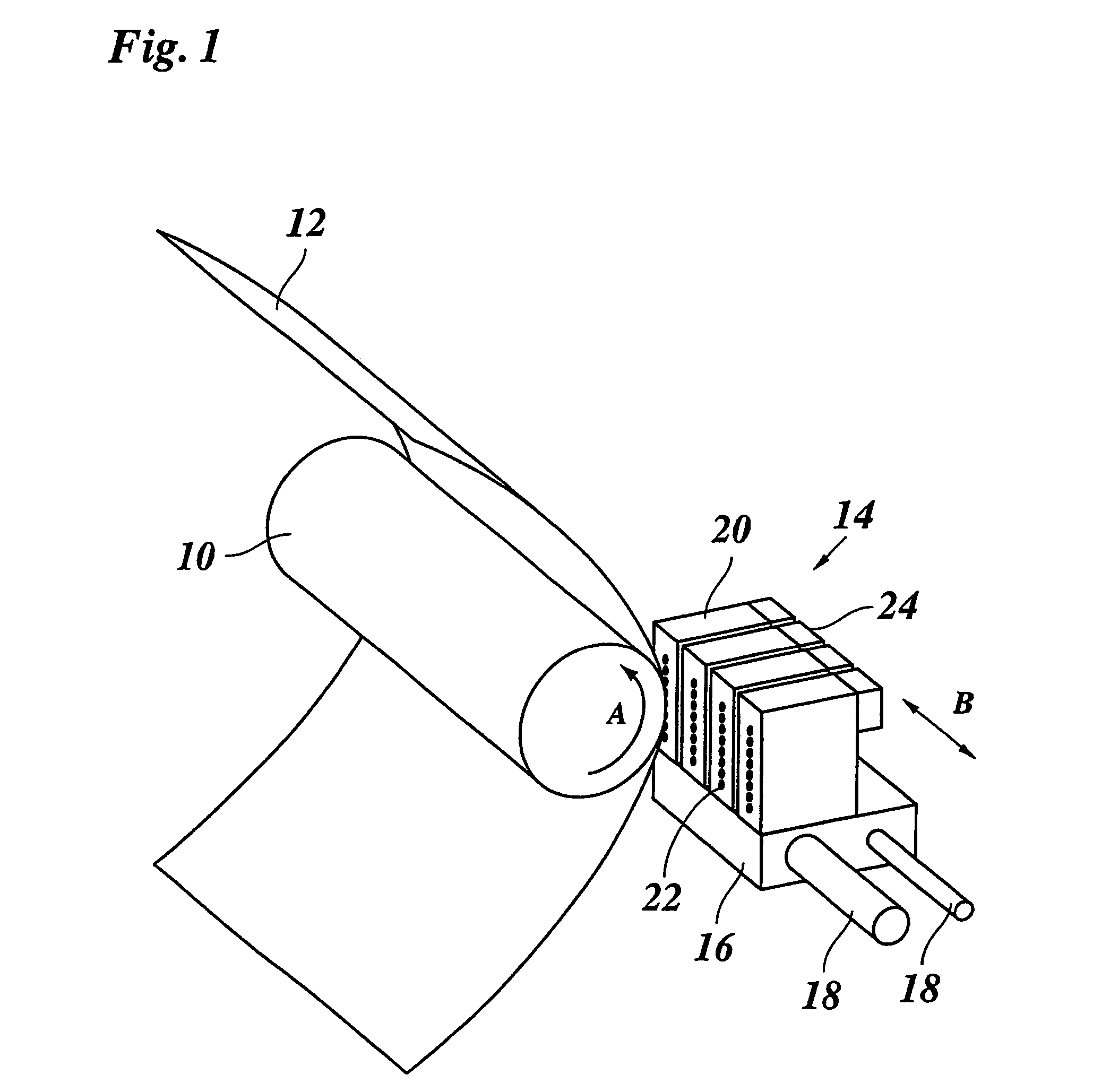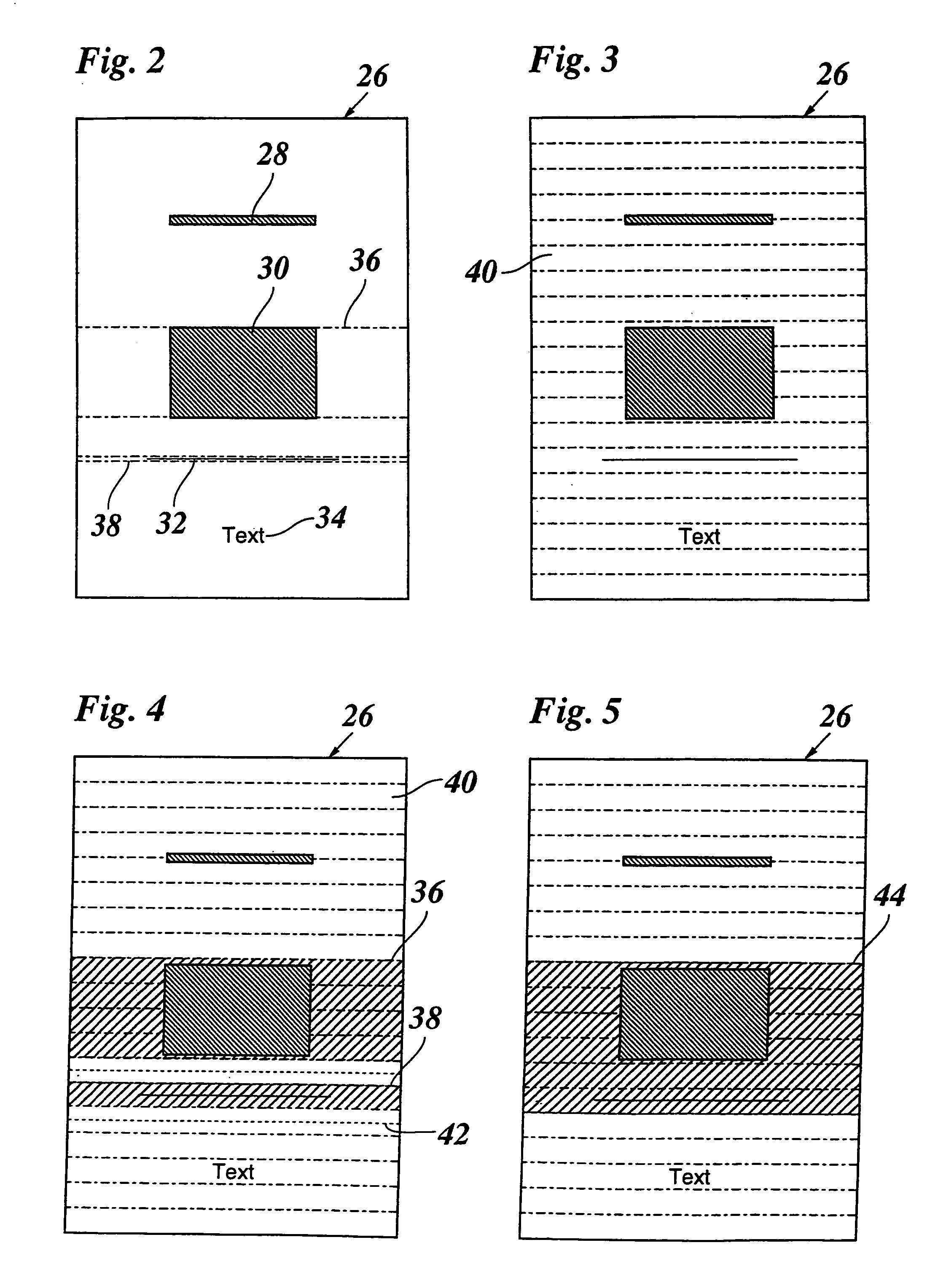[0017]For example, the shift-type failure
compensation strategy disclosed in EP-A-1 060 896, in which the black pixels that cannot be printed are shifted to neighboring locations, will be most suitable for relatively bright image areas, i.e. image areas in which the density of black pixels is comparatively low, so that a sufficient number of white pixel locations is available to which the black pixels may be shifted. In contrast, in a relatively dark
image area, e.g. a
solid black area, this
compensation strategy is likely to lead to a visible defect in the printed image. In order to achieve a high
image quality in such dark image areas, it would therefore be preferable to adopt one of the other failure compensation strategies discussed above which are capable of fully compensating the defect but which will generally lead to certain losses in productivity. It is a main
advantage of the present invention that, when a page to be printed contains both, dark and bright image areas, it is not necessary to use a relatively slow failure
compensation strategy, which assures a
good image quality in the dark areas, for the whole page, but it is possible to use this slower strategy only where it is actually needed, whereas other parts of the page, i.e. the bright image areas, can be printed with a more productive failure compensation strategy which nevertheless provides a sufficient image quality in these areas. As a result, it is possible to achieve a satisfactory image quality and nevertheless to increase the overall productivity of the print operation.
[0018]Although it would be feasible to change the failure compensation strategy even within a single
stroke of the printhead, it will generally be more efficient to retain one and the same compensation strategy for a complete printhead
stroke. Thus, the segments identified in the segmentation process will preferably consist of swaths or bands that extend over the whole width of the page and correspond to an integral number of strokes of the printhead. Then, the part of the segment that is most sensitive to failure of a print unit will determine the compensation strategy to be adopted.
[0019]In a preferred embodiment, the printer comprises a failure detection
system which automatically detects failures of print units, so that appropriate failure compensation strategies may be activated automatically. Failure detection and compensation may even be performed “
on the fly”, i.e. while the printer is operating. Then, when a nozzle failure occurs at a time when the printer has printed a part of a page, the failure compensation unit will be activated immediately, so that the printer can continue with printing average number of black pixels contained in a given basic area. The minimum requirement for image quality and hence the failure compensation strategy to be applied may then be determined simply by setting threshold values to which the primary image classifiers are compared. In order to increase the sensitivity of the segmentation process, there may be provided a set of different primary image classifiers which differ from one another in the size of the basic area. Each classifier may then be compared to an associated threshold value, and the comparison results may be filtered with an appropriate filter in order to determine the ultimate compensation strategy.
[0020]It has been observed that a defect in the printed image, which defect may be the result of an incomplete failure compensation, is less perceptible to the
human eye when there exists a high level of high-frequency contrast in the vicinity of the defect. In order to take
advantage of this effect, it is preferable to employ a context filtering procedure in the segmentation process. The context filter may be applied to the primary classifiers or, alternatively, to the associated threshold values, e.g. by shifting the threshold values depending on the level of contrast in the basic area or the vicinity thereof.
[0021]The size of the segments determined in the segmentation process will naturally be adapted to the pattern of swaths printed by the printhead, i.e. the length of the nozzle array in the direction of paper transport. Since a frequent switching between different failure the rest of the page with failure compensation. Thus, visible defects in the printed image will only occur in the relatively short
delay time between the detection of a nozzle failure and the time when the failure compensation unit becomes effective.
[0022]In some cases, however, even a short
delay time between failure detection and failure compensation may lead to an unacceptable loss of image information. This is particularly the case when a thin horizontal line has to be printed, i.e. a line which extends in the scanning direction of the printhead and has a width of only a
single pixel. Then, when the nozzle that is responsible for printing this pixel line becomes defective, the whole line will disappear. If, in that instant, the printer is in the single-pass mode, there will be no efficient way to compensate for this defect.
 Login to View More
Login to View More  Login to View More
Login to View More 


